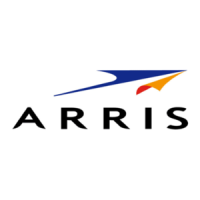Chapter 16: Dynamic Routing Protocols
STANDARD Revision 1.0 C4® CMTS Release 8.3 User Guide
© 2016 ARRIS Enterprises LLC. All Rights Reserved. 504
The operational state of each link.
The cost of the link.
Any other neighbor information.
The routers then flood these received LSAs out every OSPF-enabled interface so that all OSPFv3 routers eventually have
identical LSDBs.
When all OSPFv3 routers have identical LSDBs, the network is converged. Each router then uses Dijkstra's Shortest Path
First (SPF) algorithm to build its route table.
Note: OSPFv3 networks can be divided into separate areas which helps reduce the CPU and memory requirements for an
OSPF-enabled router because routers send most LSAs only within one area.
Hello Packets
OSPFv3 routers periodically send Hello packets on every OSPF-enabled interface. The Hello interval determines how
frequently the router sends these Hello packets, and is configured per interface.
Determining Compatibility
An OSPFv3 interface that receives Hello packets determines if the settings are compatible with the receiving interface
settings. Compatible interfaces are considered neighbors, and are added to the neighbor table.
Tasks
OSPFv3 uses Hello packets for the following tasks:
Neighbor discovery
"Keepalive" messages
Bidirectional communications
Designated router election.
Packet Contents
The Hello packet contains information about the:

